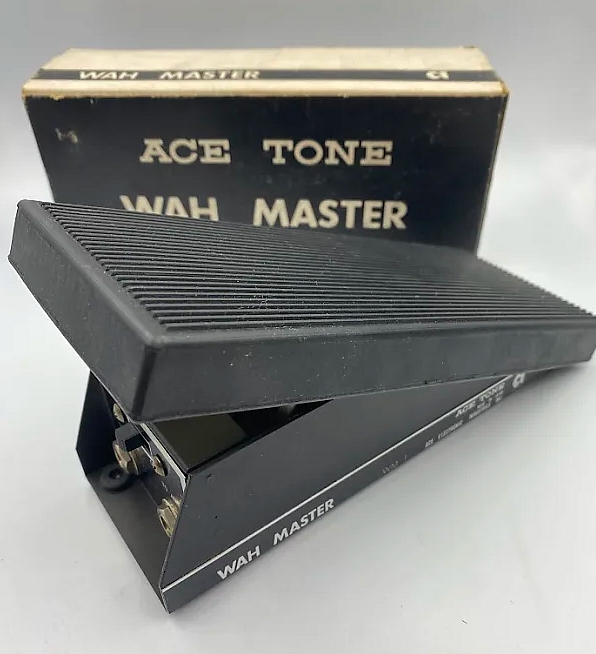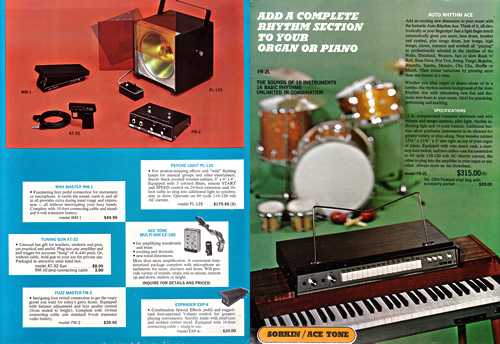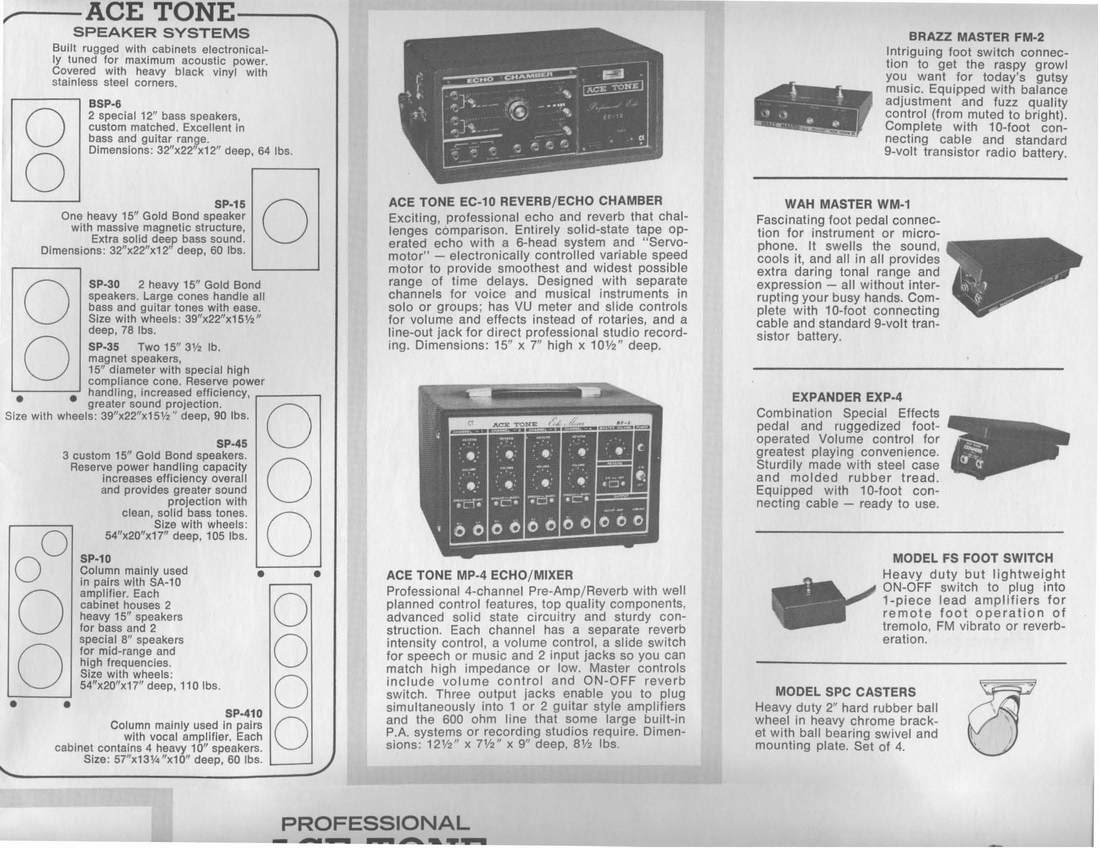Ace Tone "Wah Master"
Last updated 3/21/24
By Paul Marossy
This is a rather weird wah pedal made in Japan sometime between 1969-75 or so. I remember seeing one recently on ebay and thought it was
just another strange looking Cry Baby copy with a very unusual operating mechanism, but the more I looked into it, the more interesting it became. That is
only because of the circuit it uses; it's another inductor-less design but it's NOT a Colorsound copy or a copy of anything else as far as I can
tell. I was actually thinking that the Kazan Kvaker might be a copy of the Wah Master, and while the parts count is very similar, it turns out that circuit also appears to be unique. Also kinda unique is the function over form exhibited by the Wah Master. It needed to work well, not look pretty. It appears that the list price on these in 1969 was $49.95. At the bottom of this page are extracts from the 1969 and 1971 catalogs which show the Wah Master. The 1971 catalog description was "Fascinating foot pedal connection for instrument or microphone. It swells the sound, cools it, and all in all provides extra daring tonal range and expression - all without interrupting your busy hands".
So who was behind this "Ace Tone" place anyway? I had never heard of them until something like a year ago. Ikutaro Kakehashi founded Ace Tone Electronic Industries Inc.
in 1960, and then as I understand it, Roland-Boss in 1972. It seems that both companies were in existence for a number of years. This wah pedal was from the time just before the genesis of one of the world's largest and most well known guitar effect & keyboard manufacturers. They have set the standard as far as I am concerned. Anyway, it makes sense that the pedal was designed using this type of circuit since Kakehashi was a already a designer of synths at this time. This was probably a very easy circuit for him to design. I ended up acquiring my Wah Master because I wanted to
generate a schematic for it and model it in LTSpice.
Below is some more information about this unique wah pedal.
 |
The look of it is striking and distinctive. The steeply inclined treadle returns to heel down position via a stout coil spring and switches off automatically via a very commonly used and easily obtainable microswitch. |
 |
Here is the front of it. Note that you have to manually turn off the power. It does not use the switching input jack scheme that most of us are accustomed to. Note that the input & output jacks are opposite of convention today, where the input is on the right and the output is on the left. The Maestro Boomerang is also quirky in this respect. |
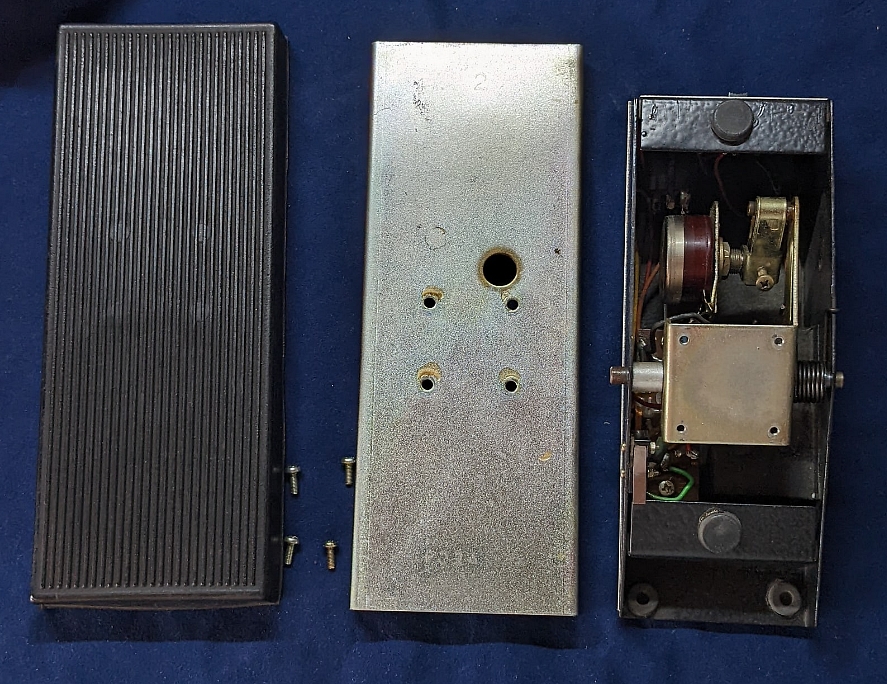 |
With the treadle removed we can see the unusual nature of this beast. Dominating the view is the part that the treadle attaches to, which doubles as an actuator for rotating the pot in a similar fashion to how Colorsound did it. |
 |
This plate has a dual function - it controls the position of the treadle and rotates the potentiometer shaft. Pretty clever. At lower right the flapper on the micro switch can be seen. When the treadle returns to heel down position it depresses the flapper and automatically "bypasses" the signal. In a certain way, I like that concept. I prefer switching a wah on/off in the heel position, so that it isn't suddenly harsh sounding. |
 |
This is the switch in its normal resting place. Here is how it appears with the treadle towards the toe down position. The switch is held in place with two screws. |
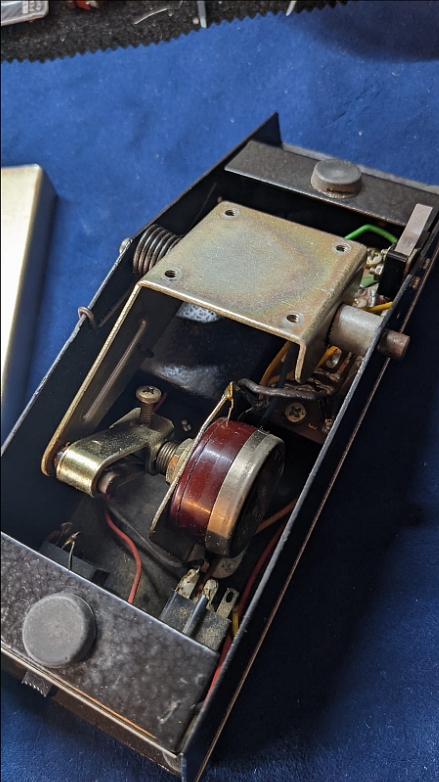 |
The potentiometer is also very unusual. Seems to be partly made of some sort of Bakelite type plastic. The circuit board is upside down and hiding underneath the shaft for the treadle plate assembly. |
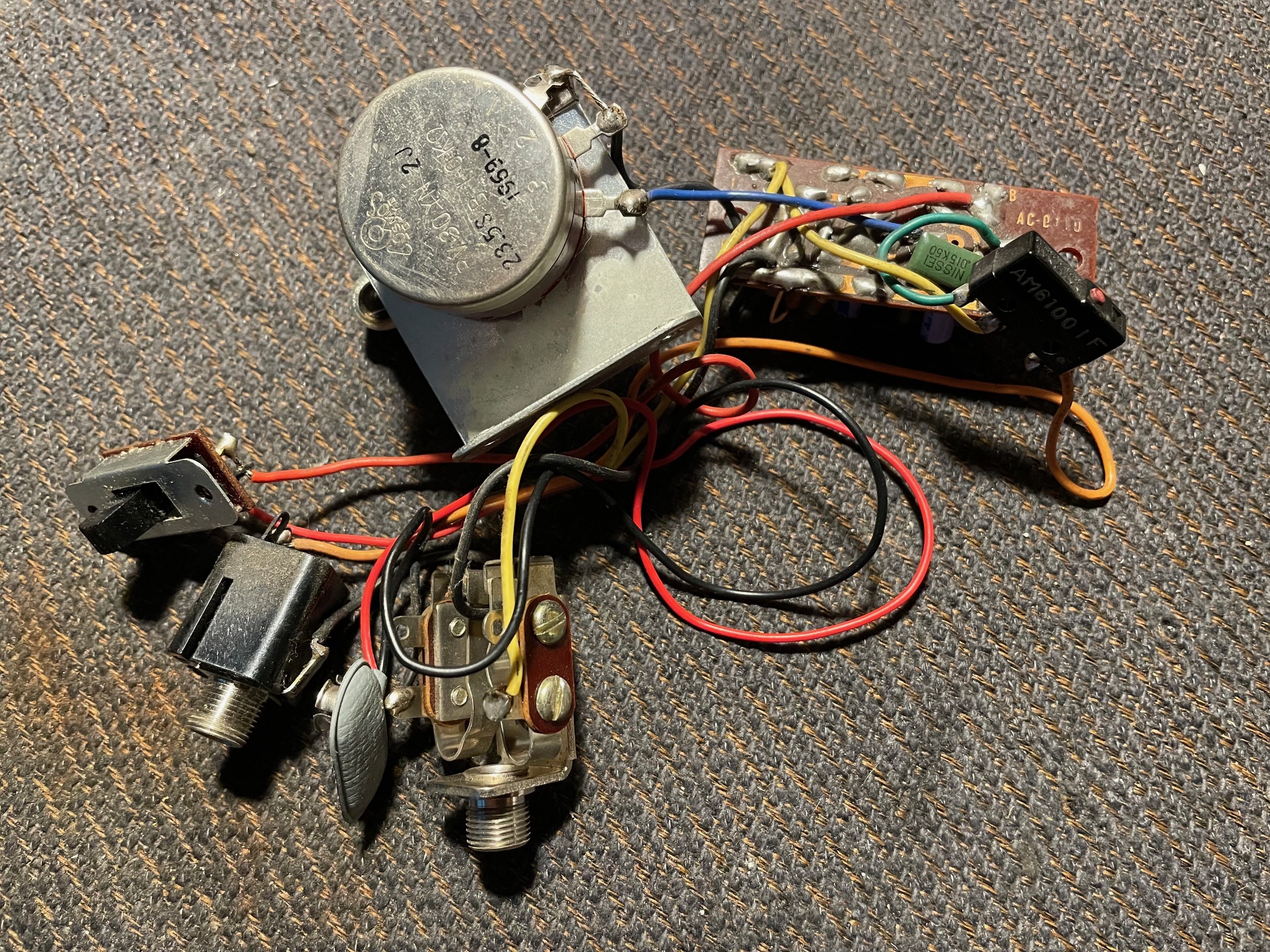 |
Here is the circuit removed from the enclosure. Not the most fun thing to get apart... but at least it's easier to deal with than the Univox was. |
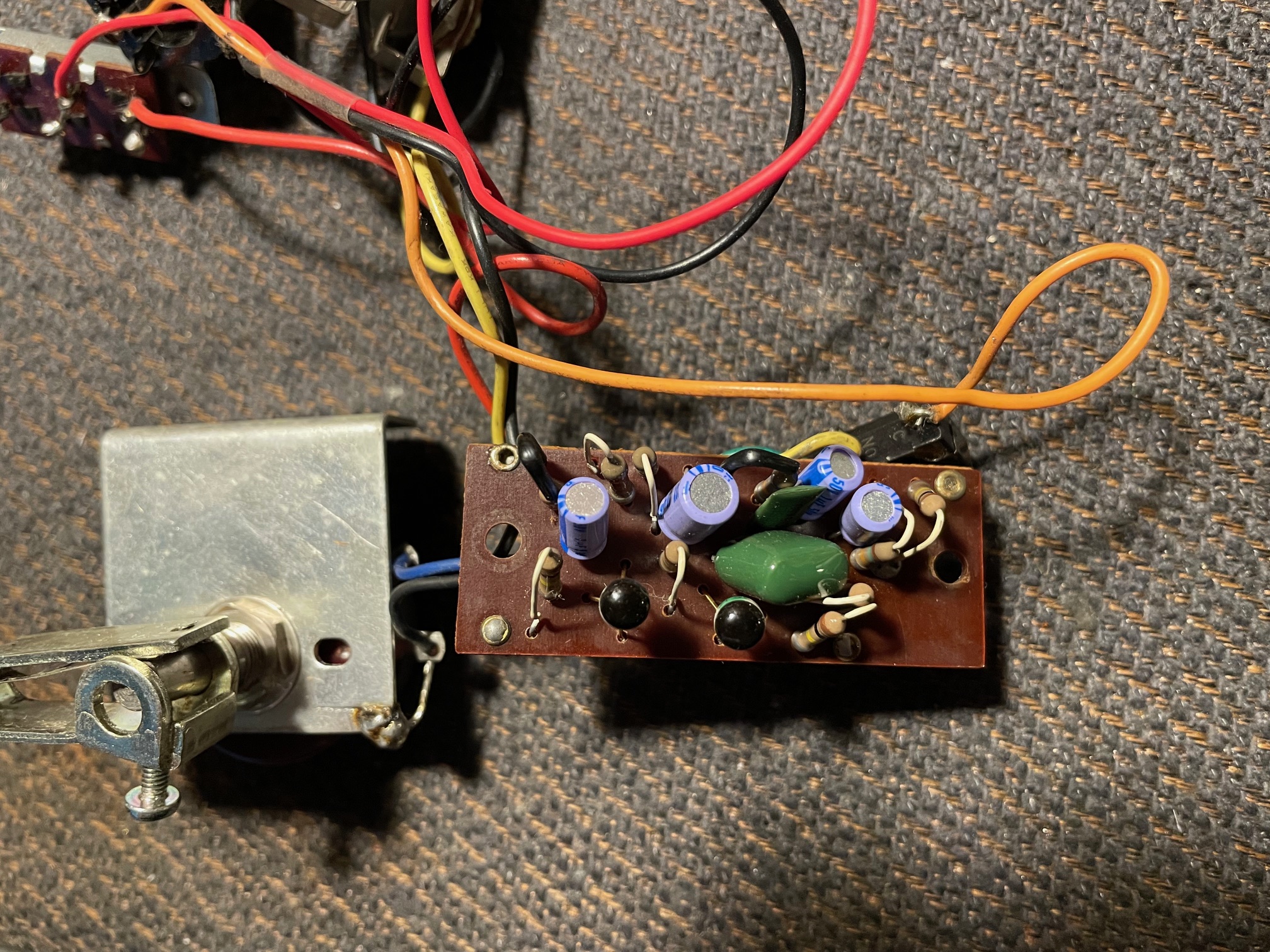 |
The circuit is designed around vertically mounted resistors and was made to be as compact as possible. There is a pair of NPN transistors marked as CDC1300. I am unable to find any info on those or what the equivalent transistors might be. It appears that they were manufactured by Continental Device Corporation. Or it could be Control Data Corporation? In any case, I have determined that these TO-106 package silicon transistors are equivalent to a 2N2222. |
 |
The input jack is most unusual. Not sure why they chose to use it. The output jack is a much more conventional type. The on/off switch is a DPDT slide switch. It simply breaks the positive connection to the 9V battery. The potentiometer is a 10K-B "Cosmos" RV30YN-2J with a date code indicating it was manufactured in 1969. Interestingly, the range of rotation appears to be only about 90 degrees vs. the more common 270 degrees or so. |
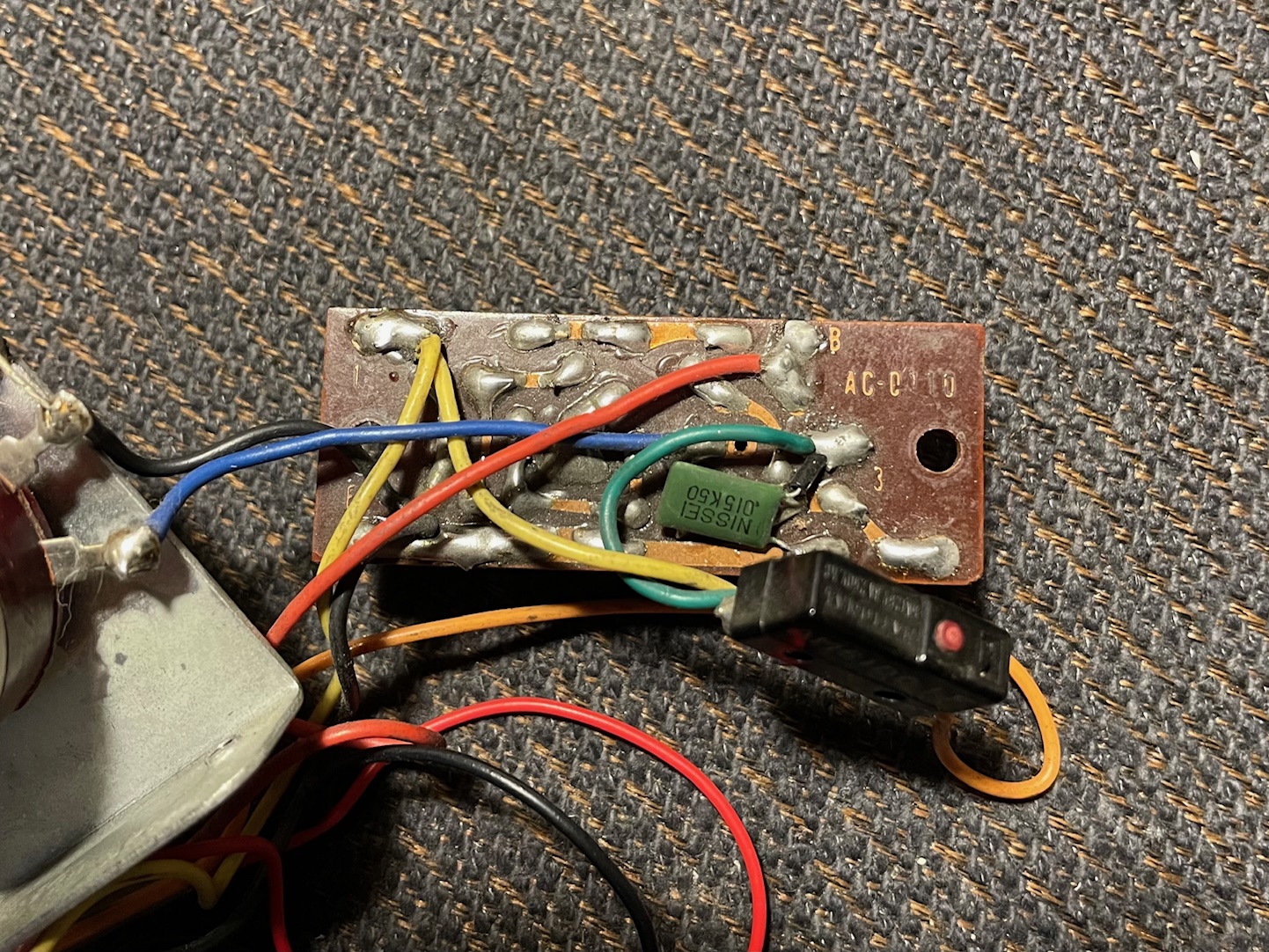 |
Here is the back side of the PCB. Notice the one capacitor added in. There seems have been some changes made to the circuit at one point in time as another example I have seen had only two electrolytic capacitors on it instead of the four that are present on my unit. |
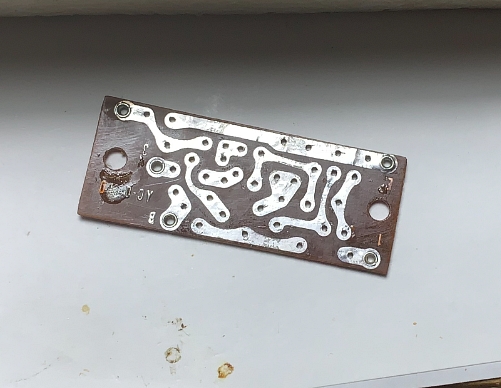 |
This is what the bare PCB looks like. It is interesting in that where the wires connect it is like a thru hole ringlet, similar to what you might see on a certain brand of classic canvas "sneakers" where the shoestrings pass thru. Never have seen that before. |
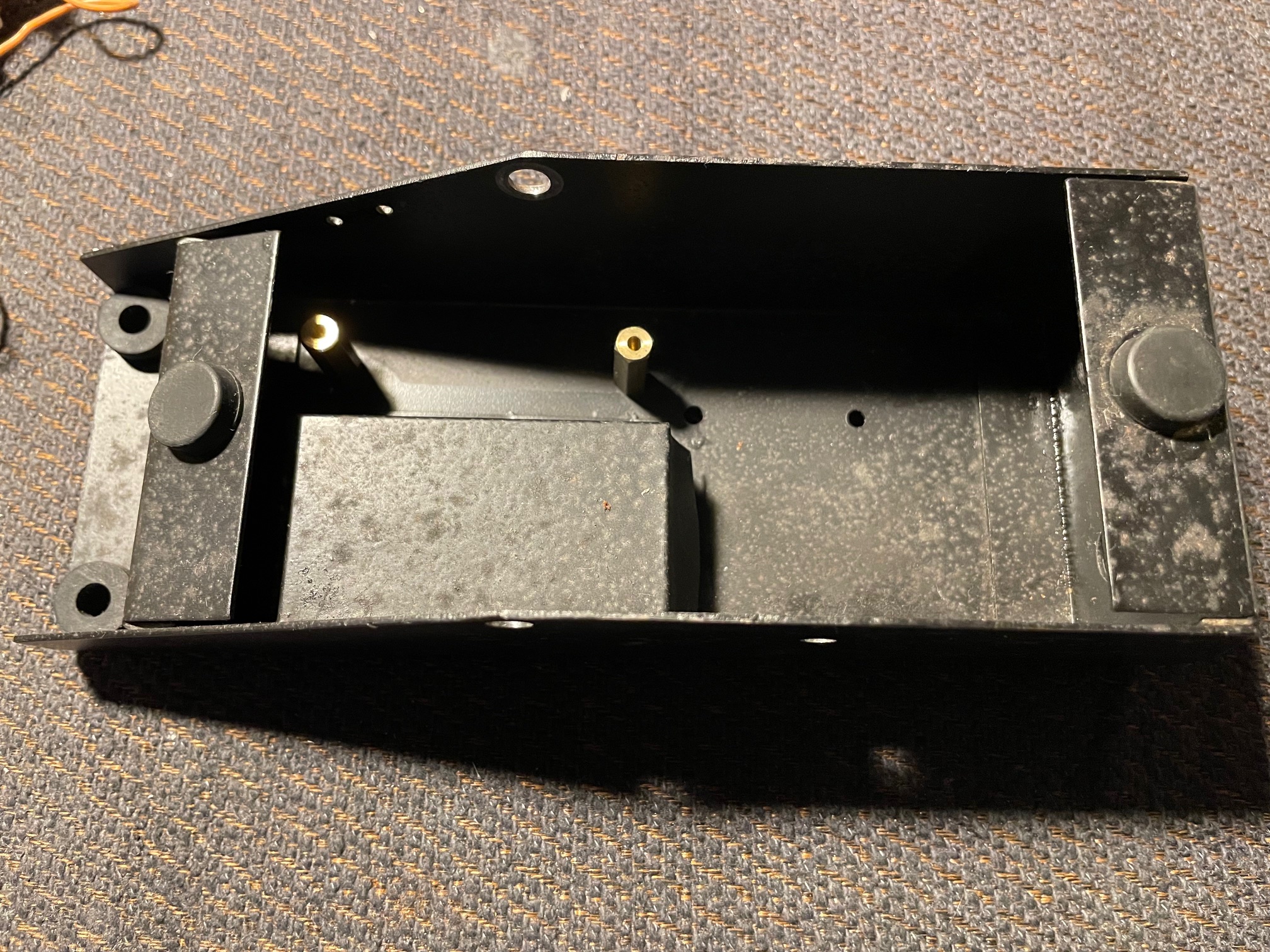 |
Here we can see the bare enclosure. There are two stand-offs for the PCB to be mounted to. The box inside is the battery compartment. It's basically just a rather light gage steel stamping which was folded into the final shape with a few parts spot welded on. |
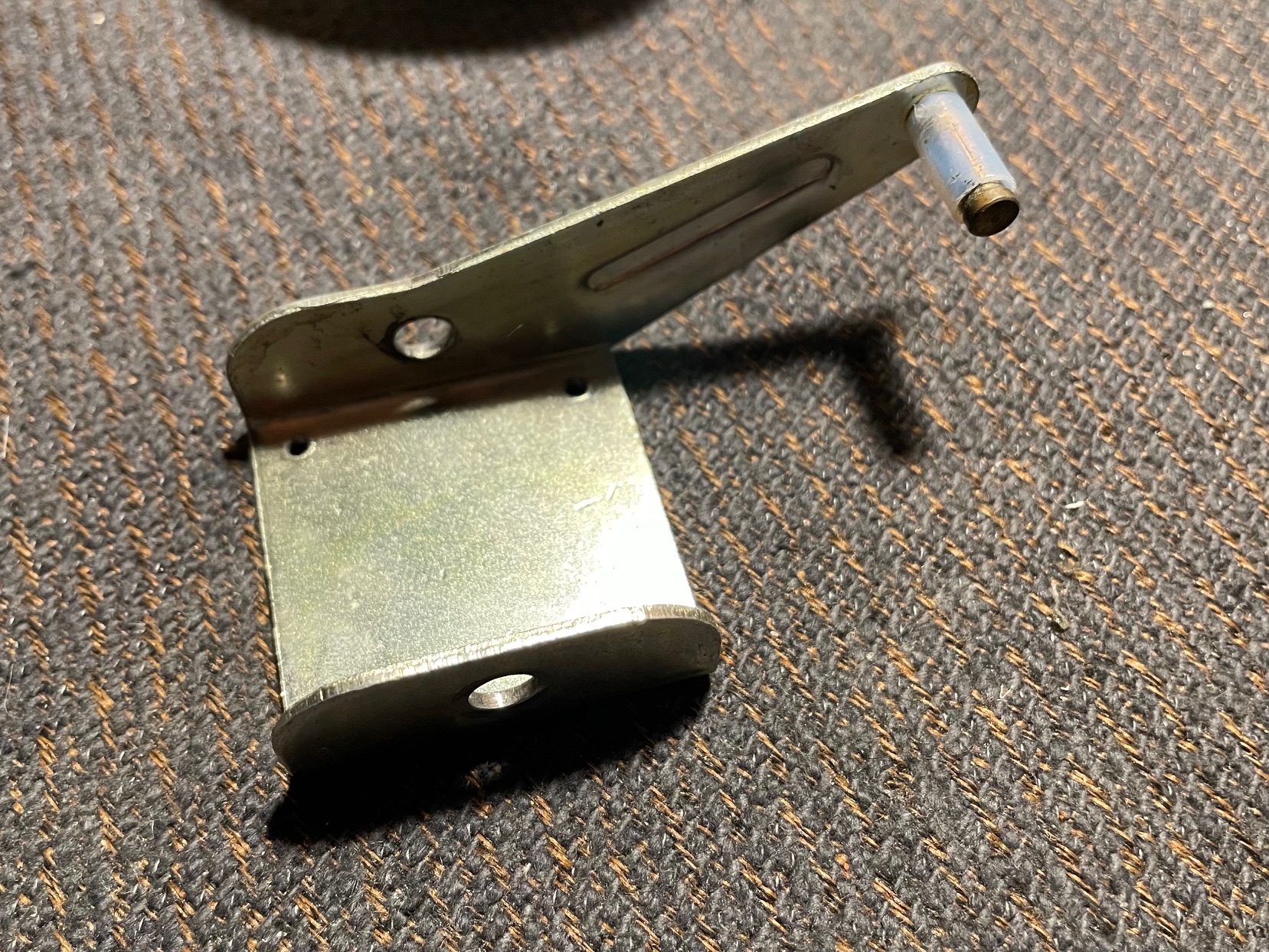 |
This is the actuator which rotates the pot via a linkage that essentially creates a slot for that pin to move in. It's very similar in principle to the method Colorsound used in their wah pedals. |
 |
Here you can see the linkage in situ. It is held in place by a screw. The position of the pot in relation to the linkage can set using the small hole in the side of the enclosure. |
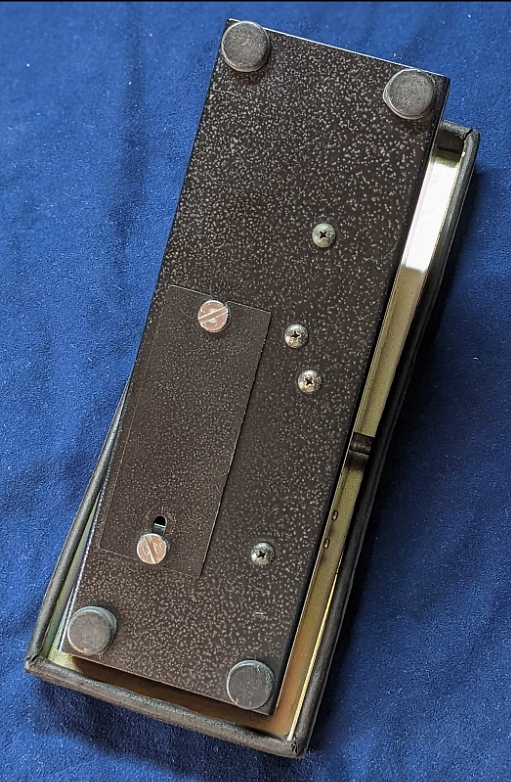 |
Hiding under this nifty "door" is the compartment for the 9V battery. According to few bits of the owner's manual that I could find, the battery should last around 100 hours. |
I find it interesting just how many different approaches have been taken with respect to circuits designed to achieve the "wah wah" sound, and the implemenation of the enclosures that utilize these circuits. Give twelve different people this task and you'll likely end up with twelve different appraches. As a mechanical engineer type, this is one reason why I have ended up with a large collection of different wah pedals over the years!
One thing to note with these old Japanese guitar pedals is that so far 100% of the ones I have acquired have had bad electroltytic caps. They had either drifted up (or down) in
value, usually by around 50%. I've even found one cap that was shorted. So all that to say that before you judge the sound of these pedals, first make sure that all the parts
inside are up to spec! This includes the resistors. I have also seen carbon comps that were far out of spec - enough so that they needed to be replaced. As far as sound goes,
I really like this wah pedal. It's unique and funky, in a good way. I can get all kinds of sounds out of it, even something that is kind of like an autowah sound. Full toe down on the treadle is akin to a treble booster. Good fun.

Since there is virtually no information out there on the Wah Master's companion, "The Expander" passive volume pedal (shown above), I'll mention a few of the details concerning my example which was made in 1973.
It uses the same shell and treadle design as the Wah Master minus the battery compartment & door and the two small holes for mounting a microswitch. Behind the faceplate there are the same openings for the switch that is on the front of the Wah Master. The pot used is the same style as in the Wah Master, a "Cosmos" RV30YN type but it is a 500K linear, which I find to be interesting. Normally an audio taper would be used in a volume control application but the linear pot seems to work OK due to the fact that the shaft only rotates approx. 90 degrees. Response is close to the few other passive volume pedals that I own. The long travel of the treadle makes doing fast single note volume swells a little harder to achieve but it's not a deal breaker for me.
